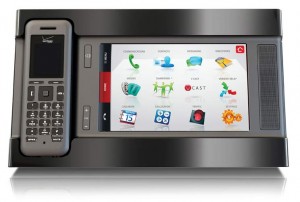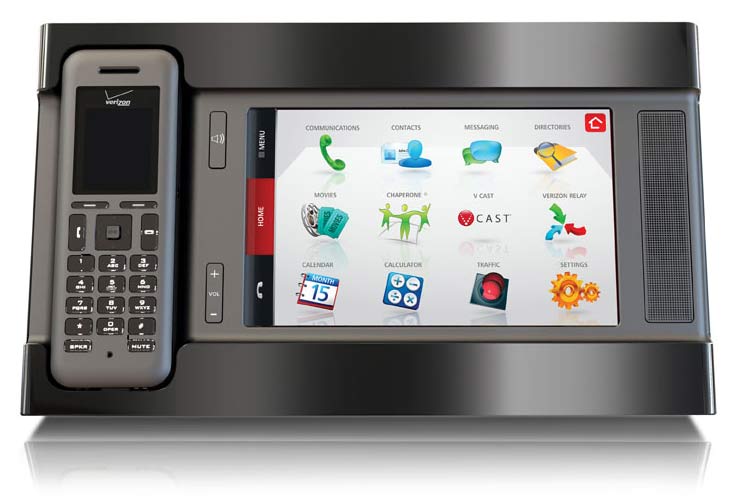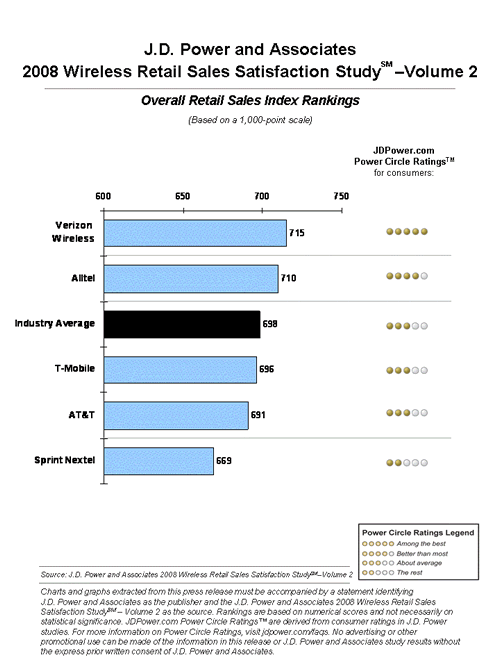Sprint V. San Diego County
On September 11, 2008, culminating 5 years of battle in the federal courts, the 9th Circuit Court of Appeals released its decision in the Sprint V. San Diego County litigation – dramatically reversing that circuit’s direction and interpretation of the 1996 Telecommunications Act (TCA). This decision brings meaningful clarification for local governments that have been grappling with how to frame their wireless ordinances.
The 9th Circuit’s en banc decision, unanimously approved by all eleven judges who heard the appeal, changes several important points of law:
First, the 9th Circuit has thrown out is prior interpretation of TCA Section 253(a)
Section 253(a) of the TCA is intended by Congress to ensure that local governments cannot prohibit or have the effect of prohibiting a telecom service. The 9th Circuit originally decided in 2001 that section 253(a) was worded in such a way as to allow a ‘facial challenge’ to local zoning codes by telecom providers. Arising out of a case called City of Auburn v. Qwest Corp (2001), the federal court originally determined that section 253(a) was worded in such a way that a telecom carrier’s challenge to a local ordinance could be brought simply by showing that the ordinance might create a prohibition or barrier to the provision of a telecom service. The facts underlying a particular challenge of a local telecom ordinance were not really the focus of the court’s hearing. Rather, under Auburn, a federal judge was only to look at the words in the ordinance to determine if, under virtually any scenario, a prohibition of a telecom service might result. If so, then the judge would be obligated to invalidate the ordinance, and in most cases, order the local government to grant the permits sought by the plaintiff carrier.
Other federal Circuits (the 1st, 2nd, and 10th) followed suit, and opened the door for similar ‘facial challenges’ to local telecom ordinances across the US.
The 9th Circuit’s Auburn decision empowered industry to legally challenge local zoning ordinances facially – before any zoning decisions are rendered or alleged damages could occur. By allowing a facial challenge to the ordinance and interpreting 253(a) to include potential prohibitions, the Auburn decision made it easier for industry to challenge local zoning codes — arguing that the code, on its face, might create a prohibition of service or barrier to the market. Given the lower threshold and standing necessary to initiate facial litigation, well-heeled challenges began surfacing in strong wireless markets where zoning controls were perceived by industry to hamper their deployments.
The 8th Circuit, in a case called Level 3 v. City of St. Louis, went in a different direction regarding Section 253(a). In so doing, it announced what would become the generally accepted approach to interpreting Section 253(a). The 8th Circuit held that the plain words in the Telecom Act required that a plaintiff (usually the wireless carrier) must show actual or effective prohibition of service or barrier to the market – not merely a possible or potential prohibition or barrier. In it’s Level 3 decision, the 8th Circuit criticized the 9th Circuit’s interpretation of Section 253(a) setting the stage for the 9th Circuit to reverse itself when the Sprint case came up on appeal.
The 9th Circuit’s repudiation of its Auburn decision now brings us back to a more conventional way to look at local ordinances – now, under the 8th and 9th circuits standards for evaluating Section 253(a), in order to challenge a local zoning ordinance a telecom carrier must show that the application of the local ordinance in a particular case, resulted in the actual or effective prohibition of a telecom service. This is commonly known as an “as applied” challenge, which requires the court to look at the facts underlying the prohibition claims.
The 9th Circuit reversal of the Auburn decision is important for local governments because it ensures that any challenge in court will be resolved through a rational review of the facts and an evaluation of the ordinance and codes as they were applied to the situation. Since this approach is rooted in fact finding and the determination of an actual prohibition or barrier to the provision of a telecom service, according to Judge Gould in his concurring remarks in the Sprint case, “Cases of a pre-empted zoning ordinance will doubtless be few and far between…”

Wireless towers in the landscape.
Second, the 9th Circuit Announced that Sections 253(a) and 332(c) are Basically the Same When it Comes to Barriers and Prohibitions
Through the Auburn decision, the 9th Circuit interpreted Section 253(a) to allow facial challenge to local codes, but it did not do so for section 332(c) which is, in relevant part, worded identically to Section 253(a). In Metro PCS v. City of San Francisco (2005), the 9th Circuit decided that Section 332(c) required an evaluation of the actual effect of the City’s ordinance; not just the potential effect of the ordinance. Both sections 253(a) and 332(c) share common wording and the same meaning across this concept, and therefore should require the same standard of legal review. Prior to the Sprint decision, section 253(a) was accorded different treatment – effective a higher status than Section 332 – in that the court indicated that Section 253 provided a basis for facial challenge to local ordinances. Now the 9th Circuit has reversed that interpretation, indicating that the language in both sections are the same; have the same meaning; and require the same standard of legal review – namely “as applied”.
The reversal of Auburn and harmonizing the interpretation of Sections 253 (a) and 332(c) will yield consistency and order to the court decisions to follow – as Judge Graber stated –
“Our holding today therefore harmonizes our interpretations of the identical relevant text in 253(a) and 332(c)(7)(B)(i)(II). Under both, a plaintiff must establish either an outright prohibition or an effective prohibition on the provision of telecommunications services; a plaintiff’s showing that a locality could potentially prohibit the provision of telecommunications services is insufficient.”
Ripples in the pond
Traditional advocacy efforts in the wireless infrastructure industry are changing. In the past, the industry sector participated in local ordinance revision efforts, worked to pass state legislation to streamline permitting processes, and pressed litigation using facial challenges to local codes – in an effort to revise the local regulatory landscape to a more industry friendly posture. Traction in local ordinance revisions has proven elusive, and the passage of state legislation has been difficult to achieve for both political and intra-industry sector reasons. The recent decision from the 9th Circuit, and the revisions it will create across other circuits, will cap the industry’s advocacy strategy – one can almost hear echoes from industry corporate offices calling for change.
A hint at this might be glimpsed in the CTIA’s petition to the FCC to federally limit the time allowed to localities to consider zoning applications for wireless land uses. The CTIA’s petition would impose a federal, 45 day time limit after which, if no zoning decision is reached, the project is deemed approved. While opposing comments from local governments, agencies and professional associations have flown thick and fast, the CTIA’s petition still has yet to reach the end of the FCC petition process. Given everything else the public has witnessed in the last year, it’s hard to have faith in the fed or its agencies – but hope springs eternal. We’ve also witnessed some industry sector players, possibly frustrated with the permitting process in general, apparently bypass the zoning process by simply ignoring it. Several installations across California have been found without permits, in localities that have always required permitting. The California PUC is now involved, and it will be interesting to see the repercussions. The burgeoning growth of the State Wireless Associations across the US gives the industry sector a possible launch pad for a new approach and some new advocacy, and we hope to see less conflict laden approaches which focus on solid community planning concepts – again, hope springs eternal.

Billboard with wireless towers.
It’s not all wine and roses, but there is a silver lining
The circumstances that many localities and planning departments are suffering in the current economic winter will no doubt generate stress on administrations and service levels. The economy, combined with the housing bubble, has dealt a double blow to local budgets and revenue streams. The ICMA finds that city and county managers are taking action – 55% are freezing vacant positions, 39% are reducing service hours, 36% are sharing services with other local governments, and 34% are eliminating delivery of non-required services. Almost 70% have increased or added user fees, and almost 40% are not pursuing approved capital expenditures – in general, many localities are buckling down for a rough ride, and it may be time to explore alternate or creative mechanisms for service delivery. (ICMA – Local Governments Gear Up to Deal with Economic Downturn)
The role wireless infrastructure plays in many localities is multi-faceted, and almost always positive.
• It is a force multiplier, empowering people to work and communicate anytime, anywhere. Communications, and particularly wireless communications for the rural areas, is important to local economic development. It’s one of the more important assets in the new economic development paradigm. The new economic development game is all about empowering the community to develop local business that can compete nationally and globally – and good communications
infrastructure is essential to achieving that objective.
• Wireless communications infrastructure is green – reducing VMT and carbon footprint. The APA recently adopted national policy related to global warming which encourages telecommuting and wireless communications. Necessary to that policy is the wireless infrastructure that must be present to deliver service to the community.
• Wireless infrastructure can enable enhancements to training, education and health care which improve productivity and quality of life.
• It also enables improvements to public services – from normal operations and service delivery to public safety – New York now has the ability to accept pictures sent via cell phone to 911, and then send them to the responding personnel, and California has implemented public warning systems that send messages to cell phones. Across the country, many areas have the ability to send Amber Alerts to cell phones.
Conclusions
What does this mean and how will it affect the wireless communications issues that roll across the US?
• In the wake of the 9th Circuit decision, localities should realize that a rational, balanced review of ordinances and permit decisions has returned to the courts — and localities should feel free to improve land use standards and controls which might have been postponed because of the industry’s facial attacks which were enabled by the 9th Circuit’s earlier interpretations.
• It is also important for localities to maintain balance and flexibility in their codes – the community relies on this infrastructure, and needs it to be robust and flexible in order to support an improved quality of life, and enhanced public services, education and health care.
• Despite the economic circumstances and difficulties, it’s time for localities to creatively engage this infrastructure in the planning process, update their land use controls and look towards a future of wireless benefits and appropriate infrastructure deployment. An investment in such efforts now, will yield positive benefits to the community which will help to heal some of our economic woes, while also providing better protections for our aesthetics and community character.
Robert E. Smith, AICP is a recent veteran of the tower industry. Serving the nation’s largest tower company as National Zoning Manager, Mr. Smith engaged zoning conflicts and litigation across the US, shaped industry advocacy, co-authored industry friendly legislation in several states and participated in hundreds of local ordinance revision efforts. His prior career was in public service, as City Manager and as Directors of Planning and Economic Development across several communities and Councils of Government from California to North Carolina. He recently relocated to Wilmington, NC to launch Anvil Partners, LLC — combining the experience and skills garnered from both careers to help local governments better engage and regulate wireless infrastructure.
 This move make sense from a bandwidth perspective since the video download will occur via the customer’s broadband connection required by the HUB, rather than across the Verizon Wireless network.
This move make sense from a bandwidth perspective since the video download will occur via the customer’s broadband connection required by the HUB, rather than across the Verizon Wireless network.




